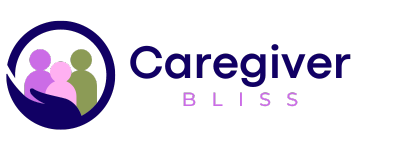Ischemic Stroke | Glossary Definition

A stroke is a medical emergency that occurs when there is a disruption in the blood supply to the brain, leading to damage or death of brain cells. Ischemic stroke is the most common type of stroke, accounting for approximately 87% of all cases.
In this article, we will dive into the definition of ischemic stroke, its causes, symptoms, and available treatment options.
What is Ischemic Stroke?
Ischemic stroke occurs when a blood clot or a plaque buildup blocks or narrows an artery that supplies blood to the brain. As a result, the affected part of the brain is deprived of oxygen and nutrients, leading to damage to brain cells. Ischemic strokes are further classified into two main types: thrombotic and embolic.
- Thrombotic Stroke: This type of stroke is caused by a blood clot that forms within one of the arteries supplying blood to the brain. The clot usually develops in areas where there is atherosclerosis, a condition characterized by the buildup of fatty deposits (plaque) on the artery walls.
- Embolic Stroke: An embolic stroke occurs when a blood clot or debris forms elsewhere in the body, often in the heart, and travels through the bloodstream to the brain. Once it reaches a smaller artery, it can get lodged, causing a blockage and subsequent stroke.
Causes of Ischemic Stroke
Several risk factors contribute to the development of ischemic stroke:
- Hypertension (High Blood Pressure): Elevated blood pressure can damage blood vessels over time, increasing the risk of blood clots.
- Atherosclerosis: The buildup of plaque in the arteries can lead to the formation of blood clots.
- Diabetes: Uncontrolled diabetes can damage blood vessels and increase the risk of clot formation.
- Smoking: Tobacco smoke contains chemicals that can damage blood vessels and contribute to the development of atherosclerosis.
- Heart Conditions: Conditions such as atrial fibrillation, heart valve disorders, and certain congenital heart defects can increase the risk of blood clot formation.
- Age and Gender: The risk of stroke increases with age, and women have a higher risk than men, particularly during pregnancy and childbirth.
Symptoms of Ischemic Stroke
Recognizing the symptoms of a stroke and seeking prompt medical attention is crucial for minimizing damage and improving outcomes. Common symptoms of ischemic stroke include:
- Sudden numbness or weakness in the face, arm, or leg, especially on one side of the body.
- Confusion, trouble speaking, or difficulty understanding speech.
- Sudden trouble seeing in one or both eyes.
- Severe headache with no known cause.
Treatment Options
Immediate medical intervention is essential for treating ischemic stroke. The primary goal is to restore blood flow to the affected part of the brain. Treatment options include:
- Clot-Busting Medications (Thrombolytics): Drugs such as Alteplase can dissolve blood clots and restore blood flow. Time is critical, and these medications are most effective when administered within a few hours of the onset of symptoms.
- Mechanical Thrombectomy: In some cases, a catheter-based procedure may be performed to physically remove the clot.
- Antiplatelet and Anticoagulant Medications: These medications help prevent the formation of blood clots and reduce the risk of future strokes.
- Blood Pressure Management: Controlling hypertension is crucial for preventing recurrent strokes.
Conclusion
Ischemic stroke is a serious and potentially life-threatening condition that requires immediate medical attention. Understanding the risk factors, recognizing the symptoms, and seeking prompt treatment can significantly improve the chances of recovery and reduce the long-term impact of a stroke.
Lifestyle modifications, such as maintaining a healthy diet, regular exercise, and managing underlying health conditions, can also play a crucial role in preventing ischemic strokes. If you or someone you know experiences symptoms of a stroke, don't hesitate – call emergency services immediately.
We hope this article has provided valuable insights into the definition, causes, and treatment of ischemic stroke. Now, we want to hear from you! Share your thoughts, experiences, or questions in the comments below. Whether you have a personal story to tell or additional information to contribute, or if you found the article helpful, your comments can help foster a supportive community and further enhance our collective understanding of this critical health issue. Let's engage in a meaningful conversation about ischemic stroke and work together to spread awareness and knowledge that can potentially save lives.
Caregiver Bliss Glossary
Ready to deepen your understanding of the elderly family caregiver industry? Don't miss out on our comprehensive Caregiver Bliss Glossary, a treasure trove of definitions and insights. Visit our glossary page now to explore a diverse range of terms and concepts that will enrich your knowledge and empower your caregiver journey.
Free Caregiver Bliss Weekly Email Newsletter
 Are you a dedicated family caregiver looking for valuable resources, support, and advice to enhance your caregiving journey?
Are you a dedicated family caregiver looking for valuable resources, support, and advice to enhance your caregiving journey?
Look no further! Our Caregiver Bliss Weekly Email Newsletter is designed to provide you with the latest insights, tips, and updates tailored specifically for family caregivers like you.
Sign up now and gain access to a wealth of information and support that can help you navigate the challenges and joys of caregiving.
